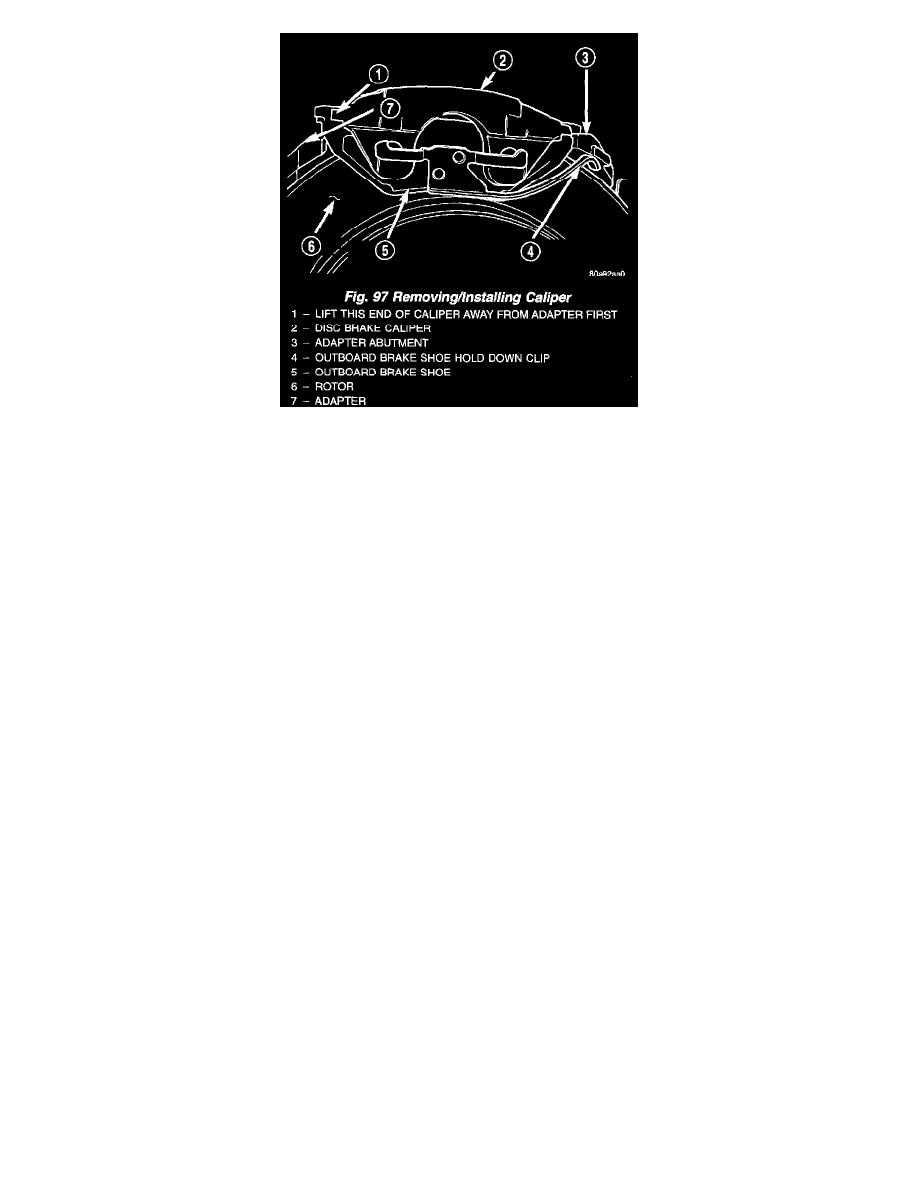Town & Country SWB FWD V6-3.3L VIN G Flex Fuel (2000)

6. Remove rear caliper from adapter using the following procedure. First rotate rear of caliper up from the adapter. Then pull the front of the caliper
and the outboard brake shoe anti-rattle clip out from under the front abutment on the adapter.
7. If the brake rotor requires removal, it can now be removed by first removing the retainer clips from the wheel mounting studs, then pulling the
rotor straight off the studs.
INSTALLATION
1. Completely retract caliper piston back into piston bore of the caliper.
2. Lubricate both adapter abutments with a liberal amount of Mopar (R) Multipurpose Lubricant, or equivalent.
3. If removed, install the brake rotor on the hub, making sure it is squarely seated on the face of the hub.
CAUTION: Use care when installing the caliper assembly onto the adapter, so the caliper guide pin bushings do not get damaged by the
mounting bosses.
4. Carefully lower caliper and brake shoes over rotor and onto the adapter using the reverse procedure for removal.
CAUTION: When installing guide pin bolts extreme caution should be taken not to cross-thread the caliper guide pin bolts.
5. Install the caliper guide pin bolts. Tighten the guide pin bolts to a torque of 22 Nm (192 inch lbs.).
CAUTION: When connecting the brake hose to the caliper, install new brake hose to caliper special washers.
6. Install the brake hose on the caliper. To do this, first place one new special fitting washer on each side of the hose fitting, then slide the banjo bolt
through the fitting. Next, thread the banjo bolt into the threaded port on the rear of the brake caliper. Tighten the banjo bolt to a torque of 47 Nm
(35 ft. lbs.).
7. Install the wheel and tire assembly.
8. Tighten the wheel mounting stud nuts in proper sequence until all nuts are torqued to half specification. Then repeat the tightening sequence to the
full specified torque of 135 Nm (100 ft. lbs.).
9. Lower the vehicle.
10. Remove the brake pedal depressor (holding) tool.
11. Bleed the hydraulic brake circuit to the brake caliper. Refer to Brake Bleeding, Service and Repair, Base Brake Bleeding.
12. Road test the vehicle and make several stops to wear off any foreign material on the brakes and to seat the brake shoe linings.
